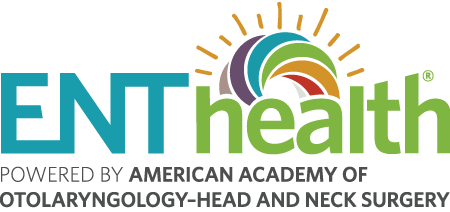Pediatric Sleep-disordered Breathing
Pediatric sleep-disordered breathing (SDB) is a general term for breathing difficulties during sleep. SDB can range from frequent loud snoring to obstructive sleep apnea (OSA), a condition where part, or all, of the airway is blocked repeatedly during sleep.
When a child’s breathing is disrupted during sleep, the body thinks the child is choking. The heart rate increases, blood pressure rises, the brain is aroused, and sleep is disrupted. Oxygen levels in the blood can also drop.
Approximately 10 percent of children snore regularly, and about two to four percent of children experience OSA. Recent studies indicate that mild SDB or snoring may cause many of the same problems as OSA in children.
What Are the Symptoms of Pediatric SDB?
Potential symptoms and consequences of untreated pediatric SDB may include:
- Snoring—The most obvious symptom of SDB is loud snoring that is present on most nights. The snoring can be interrupted by complete blockage of breathing, with gasping and snorting noises associated with waking up from sleep. Loud snoring can also become a significant social problem if a child shares a room with siblings, or at sleepovers and summer camp.
- Irritability—A child with SDB may become irritable, sleepy during the day, or have difficulty concentrating in school. He or she may also display busy or hyperactive behavior.
- Bedwetting—SDB can cause increased urine production at night, which may lead to bedwetting (also called enuresis).
- Learning difficulties—Children with SDB may become moody and disruptive, or not pay attention, both at home and at school. SDB can also be a contributing factor to attention deficit disorders in some children.
- Slow growth—Children with SDB may not produce enough growth hormone, resulting in abnormally slow growth and development.
- Cardiovascular difficulties—OSA can be associated with an increased risk of high blood pressure, or other heart and lung problems.
- Obesity—SDB may cause the body to have increased resistance to insulin, and daytime fatigue can lead to decreased physical activity. These factors can contribute to obesity.
What Causes Pediatric SDB?
A common physical cause of airway narrowing contributing to SDB is enlarged tonsils and adenoids. Overweight children are at increased risk for SDB because fat deposits around the neck and throat can also narrow the airway. Children with abnormalities involving the lower jaw or tongue, or neuromuscular deficits such as cerebral palsy, have a higher risk of developing SDB.
How is Sleep Apnea Diagnosed?
If you notice any of the symptoms described in this article, have your child checked by an ENT (ear, nose, and throat) specialist, or otolaryngologist. Sometimes physicians will make a diagnosis of SDB based on history and physical examination. In other cases, like children suspected of having severe OSA due to craniofacial syndromes, morbid obesity, neuromuscular disorders, or for children less than three-years-old, additional testing such as a sleep test may be recommended.
The sleep study, or polysomnography (PSG), is an objective test for SDB. Wires are attached to the head and body to monitor brain waves, muscle tension, eye movement, breathing, and the level of oxygen in the blood. The test is not painful and is generally performed in a sleep laboratory or hospital. Sleep tests occasionally produce inaccurate results, especially in children. Borderline or normal sleep test results may still result in a diagnosis of SDB based on parental observations and clinical evaluation.
What Are the Treatment Options?
Enlarged tonsils and adenoids are a common cause for SDB. Surgical removal of the tonsils and adenoids, called tonsillectomy and adenoidectomy (T&A), is generally considered the first line treatment for pediatric SDB if the symptoms are significant, and the tonsils and adenoids are enlarged. Of the more than 500,000 pediatric T&A procedures performed in the United States each year, the majority treat SDB. Many children with OSA show both short- and long-term improvement in their sleep and behavior after T&A.
Not every child with snoring needs to undergo T&A. If the SDB symptoms are mild or intermittent, academic performance and behavior is not an issue, the tonsils are small, or the child is near puberty (because tonsils and adenoids often shrink at puberty), it may be recommended that a child with SDB be watched conservatively and treated surgically only if symptoms worsen.
Recent studies have shown that some children have persistent SDB after T&A. A post-operative sleep study may be necessary, especially in children with persistent symptoms or increased risk factors for persistent apnea after T&A such as obesity, craniofacial anomalies or neuromuscular problems. Additional treatments such as weight loss, the use of continuous positive airway pressure (CPAP), or additional surgical procedures may sometimes be required.
What Questions Should I Ask My Doctor?
- Because tonsils and adenoids often shrink at puberty, how will I know it’s safe for my child if they are not removed?
- Is a sleep study required to make a diagnosis?
- After my child has had their tonsils and adenoids removed, will they have any problems with immune function?
Last reviewed December 2018.
SLEEP AND SNORING VIDEOS
Dr. Stacey L. Ishman provides an overview of pediatric sleep-disordered breathing.
Being able to breathe and sleep well through the night has an impact on the way we experience life and perform our work. ENT specialists treat sleep-disordered breathing, nasal and airway obstruction, snoring and sleep apnea, and more.
The information on ENThealth.org is provided solely for educational purposes and does not represent medical advice, nor is it a substitute for seeking professional medical care.
Get the Care You Need
Find an ENT
Think you need to consult an ENT specialist? Find someone with the expertise and location that’s best for your needs.
Be ENT Smart
Learn how to stay ENT healthy, prevent problems, and manage existing conditions to improve your, or a loved one’s, daily life.
About ENThealth.org
Find out more about the community of physician experts who can help you to Be ENT Smart and how the information was developed.
Copyright 2025. American Academy of Otolaryngology–Head and Neck Surgery Foundation

